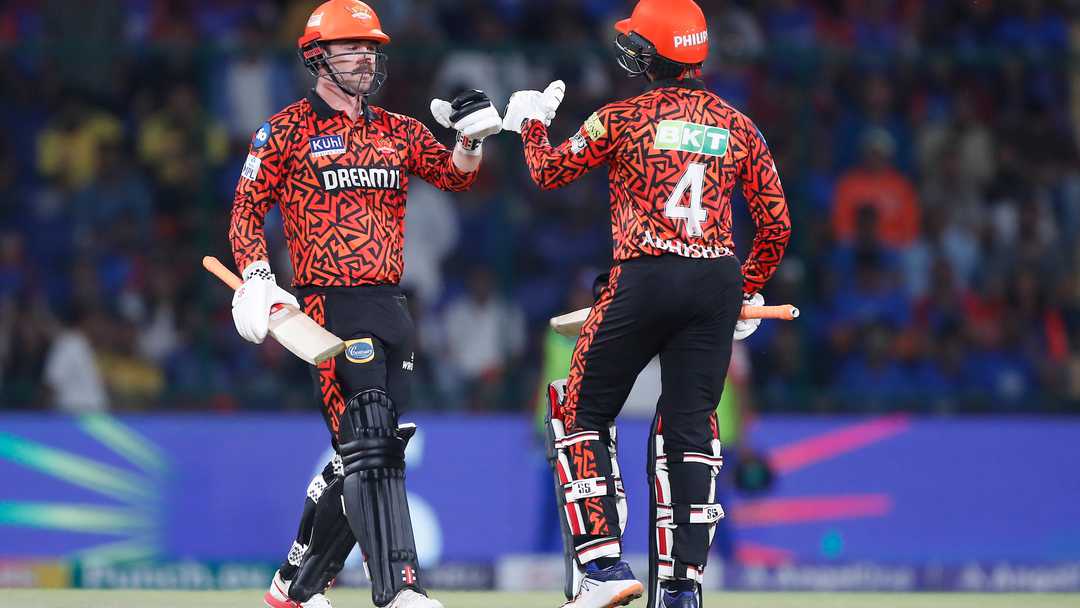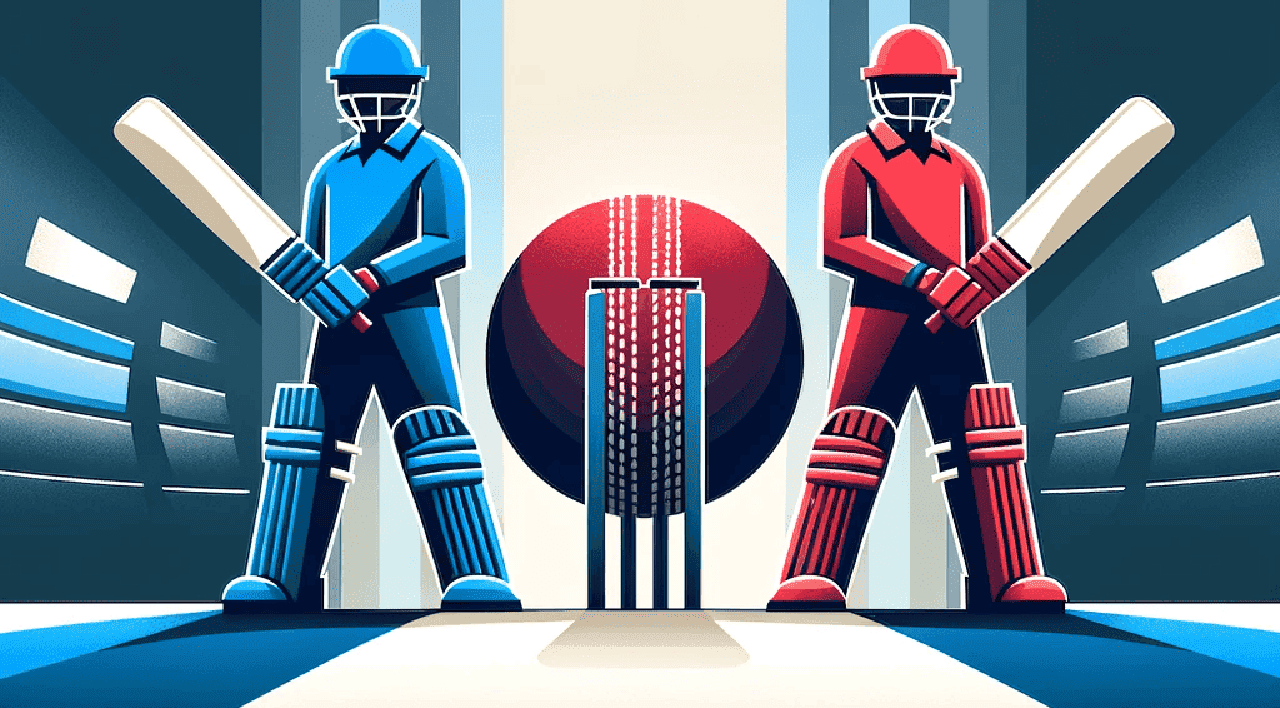
What does it take to nail batting roles in T20 cricket?
The demands of T20 cricket, arguably the most fickle format in the world, are constantly evolving. Data analysis and data science are slowly taking shape in the industry, helping players and teams adjust to these changes.
One key way data can aid decision-making is by understanding the primary driving factors behind success.
So what differentiates the most successful IPL batters from their peers? By looking at the three phases of a T20 innings separately and analyzing the data, we can see some characteristics that have allowed certain batters to stand out.
The Powerplay – a story of intent and length
The powerplay is statistically the most important phase in T20 cricket. Since 2015, the team with the higher impact in the first six overs (calculated via the DLS method) has won 68% of the time. Historically, a team losing three wickets inside the powerplay has a 70% chance of losing. Maximizing the powerplay, which is a combination of frequent boundary hitting and wicket preservation, becomes crucial.
A lot has changed in the shortest format over the years, but some trends have stood the test of time. For example, the lengths fast bowlers bowl in the powerplay have remained largely constant, with nearly 71% of deliveries in the good (6-8m from the stumps) and hard (8-10m) lengths.
Bowlers continue to operate in this area because lengths on either side of 6-10m are hit fairly easily in the powerplay. It's tough to set a field for full and short deliveries, and it feeds into most batters' go-to attacking shots. On average, batters strike at around 160 outside the 6-10m length and around 120 within it.
After length, lateral movement is one of the most crucial factors in determining the difficulty of hitting a ball. Swing lasts less than three overs in a T20 innings. After that, it drops below one degree, a figure that remains constant until the 16th over, when reverse creeps in. Interestingly, the higher the count of boundaries in the first two overs, the sooner the ball stops swinging. "Hitting the shine off the ball" is a real phenomenon even in the shortest format.
Good powerplay batting is a combination of two main skills – high intent, meaning the bowlers never get a chance to work their way into the game and the most important phase for batting is maximized – and the ability to convert 6-10m deliveries into run-scoring opportunities.
There are two main ways to implement the latter skill. The first, adopted by batters like Virat Kohli and Abhishek Sharma, is to come down the track and get closer to the pitch of the ball, opening up areas down the ground and over the infield. The second, used by Travis Head and Sunil Narine among others, is to play the pick-up shot over the leg-side after creating room by moving around the crease. Batters like Phil Salt and Faf du Plessis, meanwhile, combine these two approaches.
These seven openers ranked in the top 10 in both total runs scored as well as highest impact per ball in the powerplay in IPL 2024. Impact, calculated via the DLS method, is an excellent way to establish a relationship between wickets lost and runs scored. It quantifies the net runs added by a batter to the projected score and is ideal for determining the risk-reward factor of a particular approach.
The approaches are different, but as mentioned earlier, the results follow a distinct pattern. The best powerplay batters in the IPL are not necessarily good all-round batters – for example, Kohli, Du Plessis and Narine had strike rates below the league average outside the 6-1
The below two graphs illustrate that clearly:
There's no way around it – an elite T2
And, of course, there's intent.
Among the above seven openers, in IPL 2024, only Narine had a strike rate under 150 in his first 10 balls. Fraser-McGurk, Head, Salt and Abhishek motored along at astonishing strike rates above 175 in their first 10 balls, which was much higher than the league standard of 135.24%. Needless to say, their initial boundary percentages were well above the league average of 18.97%, with Narine's 24.32% being the lowest and Fraser-McGurk's 42.86% being the highest.
In modern T2
**The Middle Overs – where dip, height, and short balls reign
The middle overs are, in a sense, more conditions-dependent than the other two phases. The powerplay is dictated by the field restrictions, while the death overs are dictated by the number of balls remaining. But the intermediate phase has flexibility, meaning that the pitch is usually the most influential factor in teams' style of play.
In IPL 2024, pitches on the whole were significantly flatter compared to previous years. Average pace lost after pitching and average turn reached all-time lows among seasons in the previous auction cycle, making it easy for batters to trust the trajectory and hit through the line. Spinners bore the brunt of this, suddenly getting less than two degrees of turn in the middle overs for the first time in years.
Despite that, wrist-spinners managed to stand out, as they have been doing over the years in the IPL. Without any assistance from the pitch, they were reliant on deceiving batters through the air and were able to do so thanks to dip. Dip, combined with length accuracy proved near-impossible to hit even amid the flat tracks, high intent, deep batting lineups and short boundaries.
The below graph illustrates how averages fluctuate based on dip.
There are exceptions, of course. Heinrich Klaasen, KL Rahul and Shubman Gill, all of the average under 20 against dip. The elite spin hitters, including Abhishek Sharma, Rajat Patidar and Nicholas Pooran, have been perfectly comfortable despite being under six feet tall.
It isn't a given that a taller batter will be able to play dip and wrist-spin better, and it isn't practical to correlate these numbers with the heights of all batters involved given the small sample sizes and lack of access to the relevant data. But it's certainly something worth thinking about from roster construction and bowling strategy perspectives.
The middle overs aren't all about spin, though. Teams have grown increasingly fond of deploying their hit-the-deck pacers through that phase, and splitting the phase into overs 7-11 and 16. Even in the 12-16.
Without swing and not much seam, fast bowlers have become reliant on bounce. Close to 50% of pace deliveries bowled in the middle overs in IPL 2024, were shorter than 8m. Some of the league's best spin hitters, despite dominating their frontline matchups, were caught out by the increased amount of hit-the-deck bowling.
**The Death Overs – combatting pace-off and even spin?
To understand what a death-overs hitter needs to do, looking at the strategies bowlers employ. The yorker has been discussed at length when it comes to death-bowling plans. But as teams become more data-conscious, they are bound to realize that variance (or unpredictability could be more important than execution, even of a bowler.
Consider that a quality death-overs hitter, perhaps even in IPL2025, will be required to combat various kinds of spin at the death. The Paarl Royals took this to the next level in the SA20 league, where a slow wicket allowed them to use over15.
A quality death-overs hitter, or a bowler will need to be well-rounded if they are to keep up with the rate at which T20s evolving.

